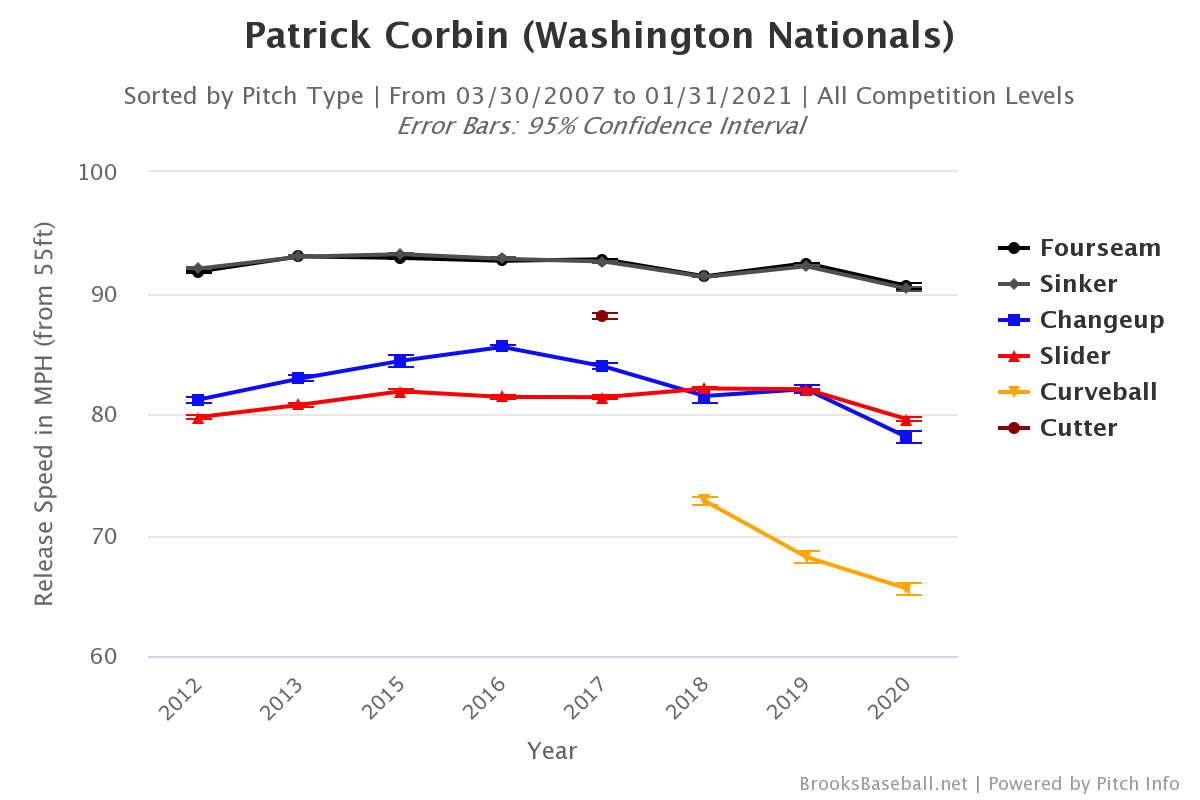Pitchers To Watch In Spring Training
Spring training can be helpful in determining a pitcher’s future performance. While most of it should be taken with a grain of salt, sometimes it can be a calling card for things to come. Some major components to look out for involve velocity, command, and pitch mix.
Velocity is a little tricky because a lot of the time the radar guns could be wrong. They aren’t playing in MLB stadiums so the technology isn’t as reliable, but still something to monitor.
Command comes with one simply watching the games. Is the pitcher hitting their spots? Are they keeping pitches elevated or below the zone? These are a few aspects of command to look out for.
Pitch mix you can’t really look into when it comes to selection for spring training. Pitchers can go out there and throw their curveball ten times in a row just to see how it is performing. What you can do is look for new pitches. Every year you hear some kind of hype around a player developing a new pitch. We have to keep in mind that it isn’t always a good thing and these pitches can take years to develop. Frankie Montas took a full season to get comfortable with his splitter and didn’t start to really utilize it until 2019. In spring training if a pitcher is adding a new pitch, see if they look comfortable using it and also see if they are able to command it.
The pitchers below all have something you should be on the lookout for in spring training. All of them have something to work on and all of them can really swing one way or the other.
Marcus Stroman elected to opt-out of the 2020 season after an injury to start the year and then because of COVID-19. He is coming off an impressive 2019 campaign pitching for both the Toronto Blue Jays and New York Mets.
Stroman pitches for contact and is able to induce a lot of ground balls by utilizing his sinker and stellar slider. The Mets acquiring Francisco Lindor certainly helps him. Due to an amazing tweet from Alex Fast overlaying all of Stroman’s pitches, Stroman himself commented saying, “New 4-seam and split-change coming soon too. The future excites me!”
An overlay of every pitch type @STR0 threw in 2019 including usage%, average velo, ball trails and more! pic.twitter.com/qqeDnPbJlx
— Alex Fast (@AlexFast8) December 22, 2020
He learned the new split-changeup from Robert Gsellman and a video surfaced of it from Rob Friedman.
Well, look who it is…with a (new) Filthy Changeup…
— Rob Friedman (@PitchingNinja) August 8, 2020
From the looks of it, the movement looks fantastic and this could lead to Stroman getting more strikeouts. The caveat alludes to what was mentioned in the introduction. New pitches aren’t always a good thing, more specifically right away. Either way, you still have to be intrigued, and watching Stroman work his new fastball and changeup in spring training becomes a necessity.
Chris Paddack is a prime example of a new pitch not working out. After his 2019 season, Paddack’s main crutch was the lack of a third pitch. The four-seam and changeup were fantastic but to become elite you really need that extra pitch. He decided to add a cutter to his arsenal and it completely ruined his four-seam.
| Year | wOBAcon | Barrel% | SwStr% | EV |
|---|---|---|---|---|
| 2019 | 0.349 | 8.0 | 12.0 | 89.6 |
| 2020 | 0.498 | 13.5 | 9.6 | 93.8 |
The four-seam obviously struggled but what does this have to do with his cutter? While it isn’t really a fact you have to think trying to get the cutter to move by adding gyro spin transferred over to his four-seam. The four-seam went from having a vertical movement of 10.23 inches in 2019 to 8.55 inches in 2020. Less vertical movement and more horizontal movement lead to the downfall of this pitch.
What we have to watch for with Paddack is if the four-seam comes back. Does he get the rise on it he once had? If he does and he looks good in spring training he could become a draft day steal.
Patrick Corbin experienced a horrible 2020 going from an elite pitcher to producing a sub-par 4.66 ERA. The scariest part about Corbin is the drop in strikeout rate. It dropped to just 20.3 percent while he averaged 29.6% between 2018 and 2019. What seems to be the main culprit was his fastball velocity.

It dipped to a career-low 91.38 MPH. Much like Paddack, his fastball lost a lot of its vertical movement going from an 8.48-inch rise to just 7.96. In 2019 Corbin also started off throwing slow throwing under 92 MPH in March and April. In the following months and the rest of the season, he averaged over 92 MPH. Perhaps Corbin just needed time to ramp up, or perhaps 2019 was a slight foreshadow for things to come. It’s tough to tell but the 90 MPH fastball being the lowest in his career is slightly worrisome.
It is pretty obvious we need to watch his velocity come spring training and look to see it hitting 90-91MPH. Velocity will rise over time so if he is hitting that mark he could be on the verge of a rebound. But if he is hitting 89 MPH or under like he did before the 2020 season Corbin owners should worry.

There will be a lot of pitchers to watch…hopefully not a lot of careers shortened after the innings drop last year…